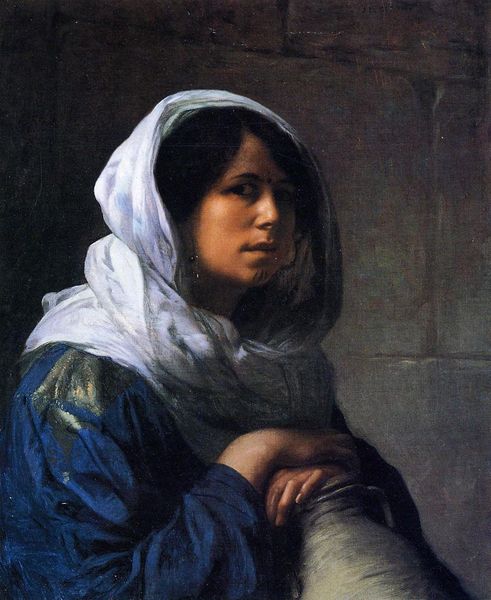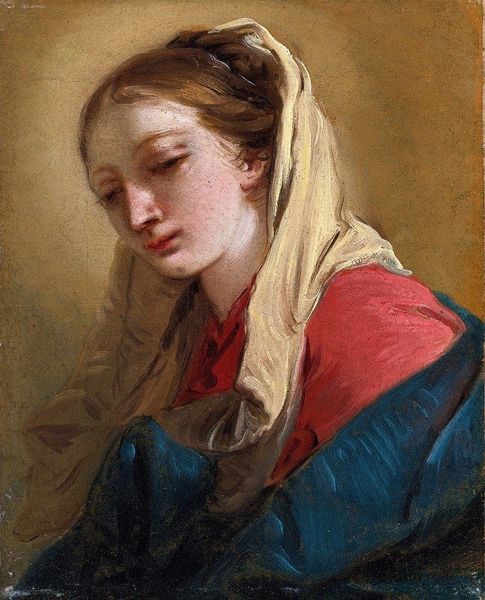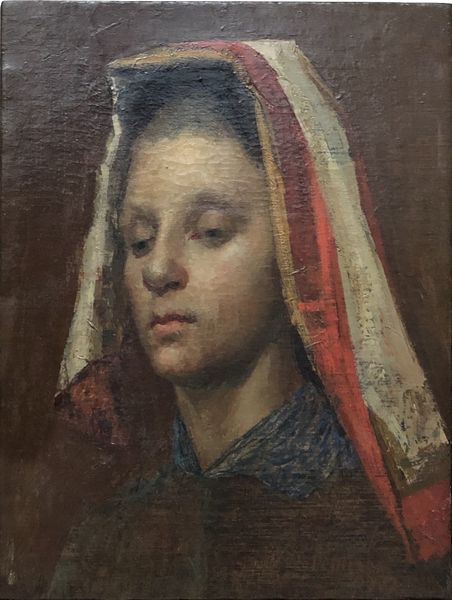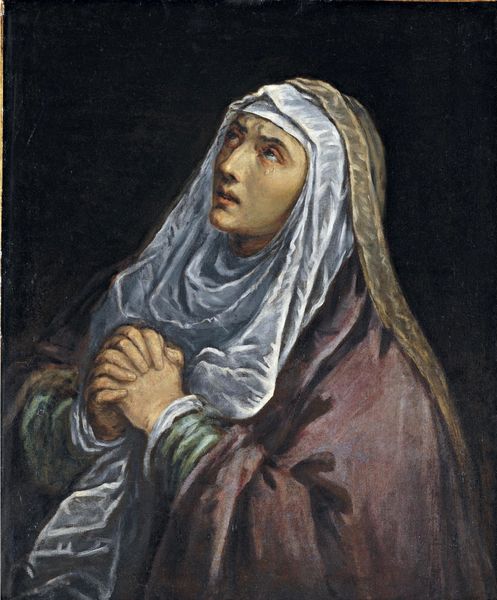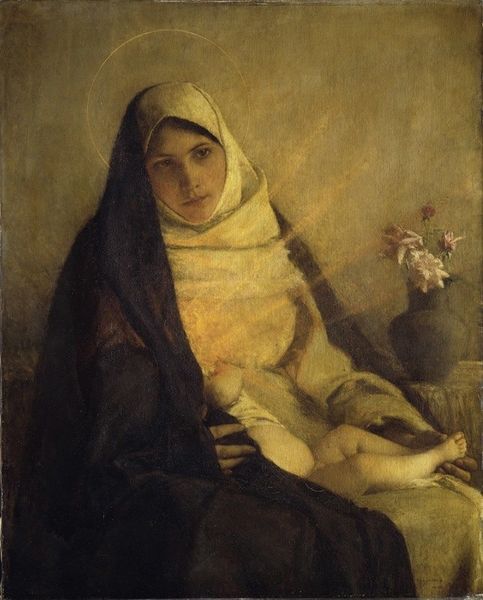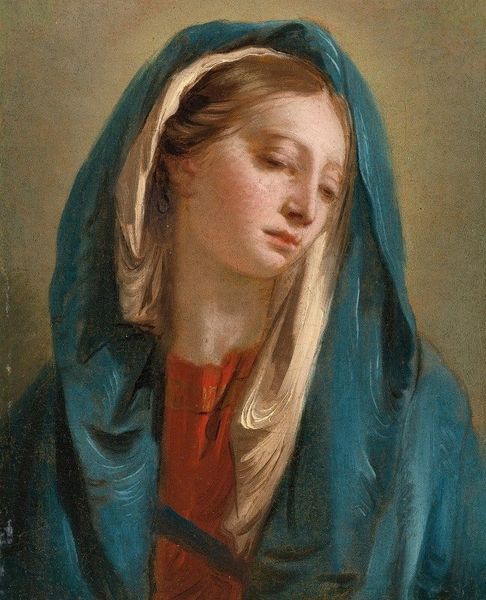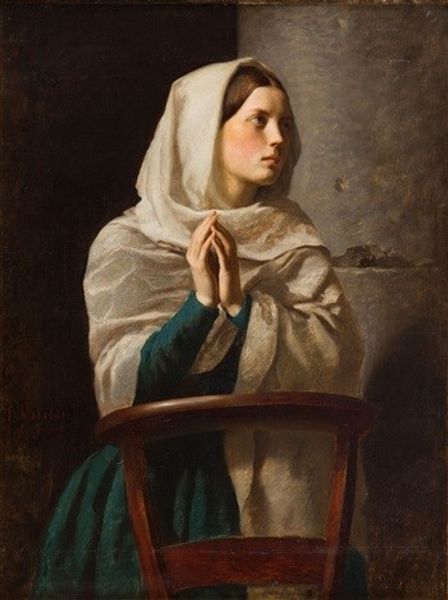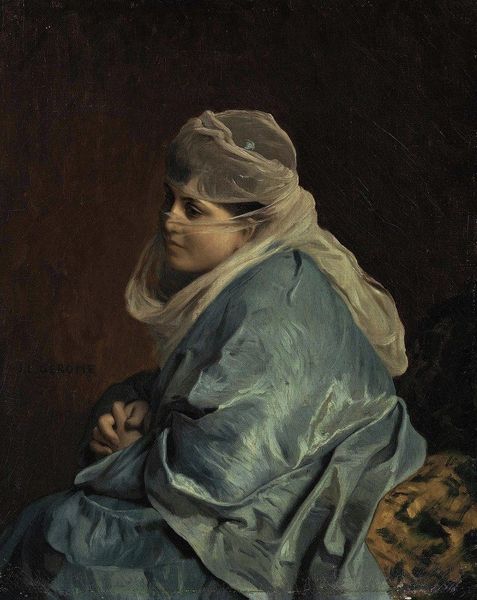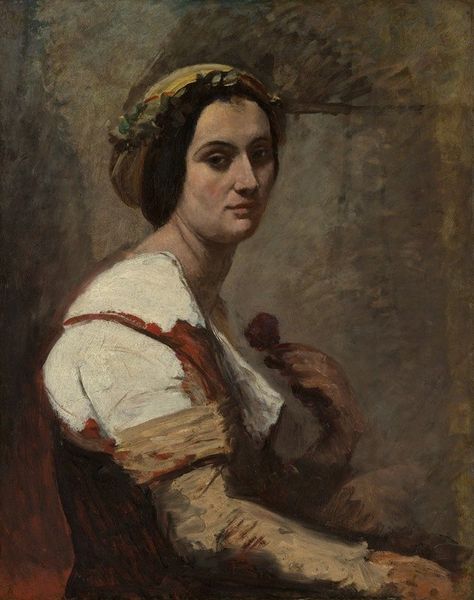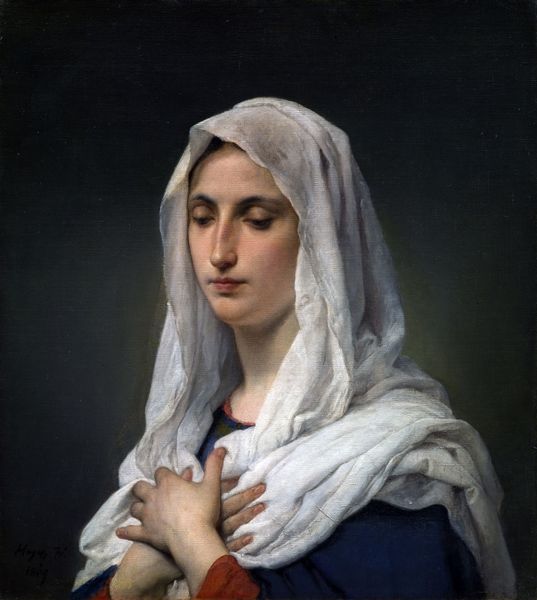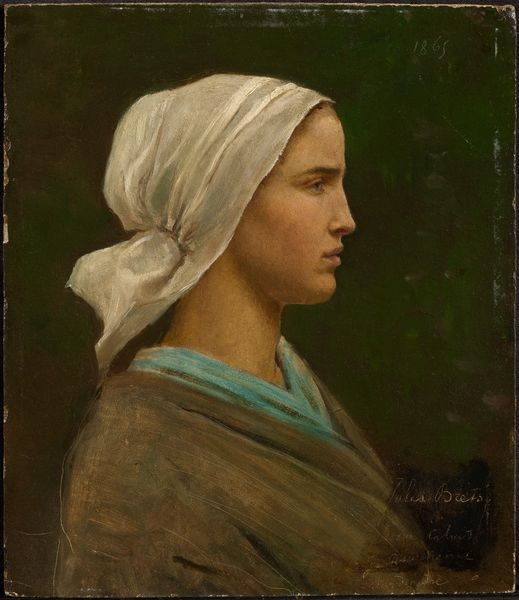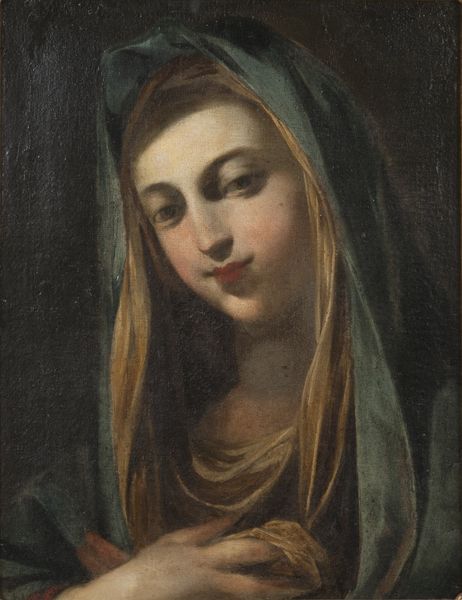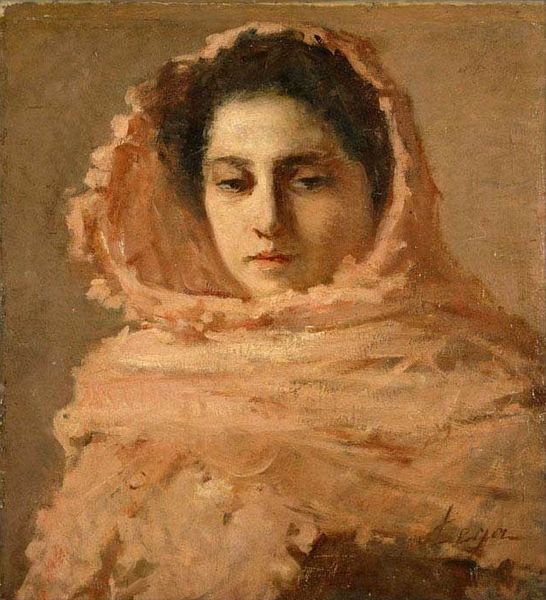
Dimensions: 58 x 47 cm
Copyright: Public domain
Editor: Anton Romako painted this work titled "Neapolitan" in 1876 using oil paints. She has this quiet, reflective gaze about her, and it just draws you in. What do you make of it? Curator: Doesn’t it just feel like a stolen moment? The intimate scale almost demands it. Notice how Romako’s brushstrokes create a sense of both solidity and transience—as if the woman herself could dissolve back into the shadows. The Neapolitan woman stares off. Where is she looking? What could she possibly be looking at? It seems as if there could be someone else, not present to the viewer, yet absolutely crucial for understanding the setting of the depicted image. Editor: That's a great observation, I agree it feels very private, as if we are intruders in a scene. How much of this painting is informed by the romantic period and the focus on emotional experience and individualism? Curator: Entirely. Romanticism certainly has this intense interest in both the inner emotional life, and, often simultaneously, this exoticizing, voyeuristic depiction of… well, essentially everyone who *isn't* the artist himself. So what Romako offers here is the idea, the almost pure feeling of Italy as mediated through *his* very subjective lens. Does that resonate? Editor: Yes, especially what you said about the male gaze. So it's almost like two portraits – one of the woman and another of the painter's feelings about Italy. Curator: Exactly! He’s painting himself as much as he's painting her. Now, next time you see one of these so-called portraits, how will you consider its purpose? Editor: I think I'll have a more nuanced and empathetic view now, less on "who" and more on "why." Thanks! Curator: That’s precisely it. Always dig deeper.
Comments
No comments
Be the first to comment and join the conversation on the ultimate creative platform.
